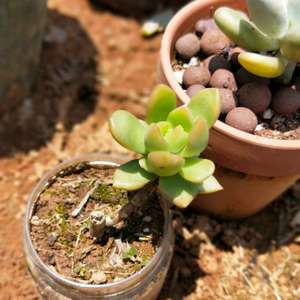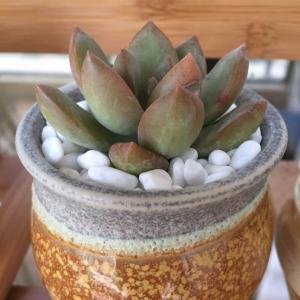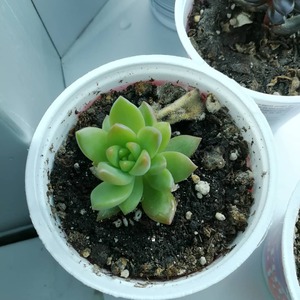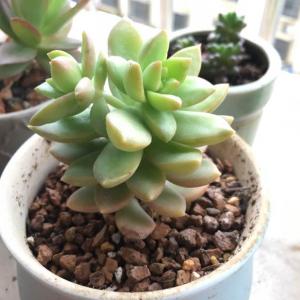动态 (221)
格桑花
2023年11月06日

The Archipelago's Unique Creation
Born from the fiery depths of underwater volcanoes, the Galápagos Islands emerged as a series of enigmatic landforms in the Pacific Ocean. Located nearly 600 miles off the coast of Ecuador, this archipelago consists of 13 main islands, each boasting its unique landscape, from barren volcanic rocks to lush highlands. The formation of these islands, through millennia of volcanic activity, set the stage for an ecological wonderland, a place where life would evolve in isolation and create a tapestry of biodiversity unlike anywhere else on Earth.Flora and Fauna: Nature's Grand Display
The Galápagos Islands are a showcase for evolution in action. The isolation, combined with the varied ecosystems—ranging from arid deserts to humid cloud forests—has led to the rise of incredible endemic species. Giant tortoises, which the islands are named after, roam the highlands. Blue-footed boobies dance along the shores, and marine iguanas, the only seagoing lizards in the world, bask on the lava rocks. The Galápagos penguin, defying the tropical location, swims in the cold currents that bathe the islands. Each island offers a unique set of inhabitants, a testament to nature's ability to adapt and thrive.Darwin and the Theory of Evolution
While the Galápagos Islands were known to Spanish mariners in the 16th century, their claim to scientific fame was solidified in the 19th century by none other than Charles Darwin. His visit aboard the HMS Beagle in 1835 became a pivotal moment in scientific history. Intrigued by the variations among species from island to island, Darwin's observations here formed the basis for his groundbreaking theory of natural selection. The finches, in particular, with their varied beak shapes adapted to different food sources, became iconic examples of evolutionary adaptation.Conservation: Protecting the Islands' Legacy
The unique biodiversity of the Galápagos has also made them vulnerable. From the 17th to the 19th century, the islands faced threats from pirates, whalers, and invasive species. Recognizing their global significance, efforts in the 20th and 21st centuries have focused on conservation. The establishment of the Galápagos National Park in 1959 and the subsequent designation as a UNESCO World Heritage site in 1978 marked significant strides in preserving this ecological gem. Today, rigorous measures ensure that tourism, a vital source of revenue, remains sustainable and minimally invasive.Conclusion: A Living Testament to Nature's Wonders
The Galápagos Islands stand as a profound testament to the wonders of the natural world and the intricate dance of evolution. Each visit offers a journey through time, witnessing the raw power of nature and the delicate balance of life. It's a place where the boundaries between the past and present blur, urging us to understand our deep connection to the environment and the importance of preserving the planet's invaluable treasures.
文章
格桑花
2023年11月05日

The Historical Tapestry of Kyoto
Steeped in history and ensconced in natural beauty, Kyoto, once the imperial capital of Japan, remains an emblem of the nation's rich past. This city offers an unparalleled glimpse into Japan's bygone eras, with its ancient temples, traditional tea houses, and preserved traditions. Unlike the sprawling metropolis of Tokyo, Kyoto is a testament to Japan's ability to blend the old with the new seamlessly. The city, with its narrow alleyways, is a labyrinth of the past, where wooden machiya houses stand proudly beside contemporary establishments.The Temple Trail: A Spiritual Odyssey
Kyoto is home to over a thousand temples, each narrating its own tale of history, art, and spirituality. From the golden pavilions of Kinkaku-ji shimmering in the sunlight to the serene beauty of Kiyomizu-dera perched on the hillside, these temples offer a tranquil retreat from the city's hustle. The Zen gardens, intricately designed with stones and gravel, inspire introspection, while the majestic torii gates of Fushimi Inari Taisha beckon visitors to embark on a spiritual journey through a tunnel of bright red arches.Tea Culture: Sipping through History
No visit to Kyoto is complete without experiencing its iconic tea culture. The city boasts a rich history of tea cultivation, with Uji, just south of Kyoto, renowned for its premium matcha green tea. Wander into a traditional teahouse in Gion, where you can participate in an authentic tea ceremony—a meticulous ritual where every movement signifies respect and gratitude. Here, one learns the art of brewing the perfect cup of tea and the nuanced etiquettes of tea drinking, all while savoring the subtle flavors and reflecting upon life's ephemeral nature.The Lifeline of Traditions: Geisha and Festivals
Kyoto remains one of the few places where one can witness the enchanting world of geishas. In the historic district of Gion, the sight of geishas, with their intricate kimonos and white-painted faces, gracefully moving through the streets, feels like a fleeting vision from a forgotten time. Beyond the geishas, Kyoto's cultural heartbeat thrives in its festivals. Events like the Gion Matsuri—a grand summer festival—and the cherry blossom viewings in Maruyama Park encapsulate the city's spirit, drawing both locals and tourists into a shared celebration of heritage and community.Conclusion: The Timeless Charm of Kyoto
Kyoto, with its profound cultural depth, is more than just a city—it's a living museum. A visit here is a journey back in time, a tactile experience of Japan's chronicles and legends. Whether you're traversing the stone paths of philosopher's walk, indulging in the culinary delights of Nishiki Market, or simply soaking in the ambiance of the ancient streets, Kyoto ensnares the senses and the soul, urging travelers to pause and appreciate the beauty in every fleeting moment.
文章
格桑花
2023年11月04日

Introduction: The Transformative Power of Intentions
Intention setting is emerging as a pivotal practice for individuals seeking holistic personal development. While traditional goal-setting often pivots on tangible outcomes and achievements, intention-setting focuses on the journey itself and the mindset with which we approach our lives. Rooted in a holistic paradigm, intention-setting values the process as much as the result. It's about imbibing and radiating the essence of what we truly seek, whether it's peace, connection, authenticity, or growth. By practicing intention-setting, we not only enhance our awareness but also better align with the deeper motivations driving our actions, creating a life enriched with purpose and clarity.The Essence and Impact of Intention-Setting
Intention-setting transcends the materialistic approach of traditional goal-setting by emphasizing internal alignment and authenticity. It's less about acquiring and more about becoming. By harnessing the power of intentions, we seek alignment with our true essence, ensuring that our external realities mirror our internal aspirations. These intentions serve as silent affirmations, guiding our decisions and interactions. They become the internal compass that directs us, ensuring we remain true to our core values. Over time, the consistent practice of intention-setting molds our reality, fostering profound transformations that ripple out, impacting not only our personal sphere but also those we interact with.Crafting and Cultivating Powerful Intentions
The art of intention-setting requires introspection and self-awareness. Start by carving out quiet moments to deeply reflect upon your aspirations, desires, and values. Avoid generic or broad statements; instead, be precise in articulating what you truly wish to embody. For instance, rather than saying, "I want to be happy," dive deeper into what happiness means for you. Perhaps it's "I intend to find joy in small everyday moments." By tailoring intentions to your unique experience, they resonate more deeply. After setting your intentions, integrate them into your daily rituals. This might mean vocalizing them every morning, meditating upon them, or even maintaining a dedicated journal. Consistent engagement amplifies their influence, ensuring they remain vibrant guiding forces.Overcoming Challenges and Embracing Adaptability
While intention-setting is potent, it isn't devoid of challenges. Life's unpredictable nature means we often encounter circumstances that might momentarily divert us from our path. Instead of viewing these as setbacks, perceive them as opportunities to refine and perhaps redefine your intentions. Being anchored to an intention doesn't mean rigidity; it's about adaptability and growth. Regularly reassess your intentions, gauging their relevance in your current context. By being fluid and open, you ensure that your intentions remain a true reflection of your evolving self, allowing for growth, transformation, and deeper understanding.Conclusion: Cultivating a Life of Purpose and Fulfillment
In a world often characterized by external pursuits, intention-setting emerges as a beacon, illuminating the path to internal harmony and purposeful existence. It's a practice that calls us to be more present, conscious, and aligned with our deeper truths. As we progressively align our actions with our intentions, we begin to sculpt a life that resonates deeply with our core essence. Through intention-setting, we are invited to not just exist but to truly live, embracing each moment with authenticity, purpose, and a profound connection to our innermost desires.
文章
格桑花
2023年11月03日

Introduction: The Essence of Self-Discovery
Embarking on a journey of self-discovery is akin to setting sail on a vast, uncharted ocean. It requires courage, openness, and a willingness to confront both the tranquil and turbulent waters of one's inner world. Self-discovery is not a destination but a continuous process that evolves over a lifetime, providing invaluable insights into our deepest desires, values, and purpose. It challenges us to peel back layers of conditioned beliefs and societal expectations, allowing us to unearth our authentic selves.Step 1: Cultivating Self-Awareness
The cornerstone of self-discovery is self-awareness. This involves introspection and reflection, creating space to explore our thoughts, emotions, and behaviors. Techniques such as journaling, meditation, and mindfulness can serve as powerful tools, helping us to observe our inner world without judgment. As we become more attuned to our inner dialogues, we start recognizing patterns and triggers, paving the way for transformative change.Step 2: Embracing Vulnerability
To traverse the depths of our being, we must embrace vulnerability. This means shedding the armor of perfection and opening ourselves up to the full spectrum of our emotions, even the uncomfortable ones. Vulnerability acts as a gateway to authenticity, allowing us to connect with our true selves and, in turn, forge deeper connections with others. It requires a leap of faith, but the rewards are profound and liberating.Step 3: Challenging Limiting Beliefs
Our beliefs shape our reality, and often, we are held captive by limiting beliefs that stem from past experiences or societal conditioning. The journey of self-discovery demands that we challenge and question these beliefs, discerning which ones serve us and which ones hinder our growth. By adopting a growth mindset, we open ourselves up to new possibilities and perspectives, fostering resilience and a sense of empowerment.Step 4: Setting Intentions and Goals
Self-discovery is not a passive process; it requires action and intentionality. Setting clear goals and intentions provides direction and purpose, propelling us forward on our journey. These goals need not be monumental; even small, incremental changes can lead to significant transformation over time. The key is consistency and alignment with our core values and purpose.Step 5: Seeking Feedback and Perspectives
While self-discovery is an inward journey, it is also enriched by external perspectives. Seeking feedback from trusted friends, family, or mentors can provide valuable insights and a different lens through which to view ourselves. It's important to approach this feedback with an open heart and mind, using it as a tool for growth rather than a measure of worth.Step 6: Embracing the Journey and Celebrating Progress
The path of self-discovery is fraught with challenges and uncertainties, but it is also filled with moments of clarity and transformation. It's crucial to embrace the journey in its entirety, celebrating the small victories and progress made along the way. Self-compassion becomes a vital companion, reminding us that the journey itself is a triumph, irrespective of the destination.Conclusion: Nurturing a Lifelong Commitment to Growth
The journey of self-discovery is a lifelong commitment to growth, learning, and transformation. It is a pilgrimage back to our authentic selves, a reclamation of our power and purpose. By navigating this journey with curiosity, courage, and compassion, we unlock the doors to a life of fulfillment, meaning, and profound connection. It is, ultimately, the greatest gift we can give ourselves and the world.
文章
格桑花
2023年11月02日

Introduction
Long-distance relationships can be challenging, requiring extra effort and communication to maintain intimacy and trust. However, with the right strategies and mindset, it is possible to make these relationships thrive. In this article, we will explore strategies for navigating the challenges of long-distance relationships and ensuring a strong connection between partners.Communication is Key
Open and honest communication is crucial in long-distance relationships. Make it a priority to have regular and meaningful conversations with your partner. Schedule video calls, send voice messages, and make use of various communication tools to stay connected. Discuss your expectations, concerns, and plans for the future. Effective communication helps strengthen the emotional bond and fosters trust.Create Shared Experiences
Even when physically apart, it's important to create shared experiences to maintain a sense of togetherness. Plan virtual dates or activities that you can enjoy together, such as watching a movie simultaneously or cooking the same recipe. Sharing experiences, even from a distance, can help you feel closer and strengthen your connection.Trust and Transparency
Trust is the foundation of any successful relationship, and it becomes even more critical in a long-distance setting. Be transparent with your partner about your feelings, fears, and insecurities. Establish trust by being reliable and keeping your promises. Avoid situations that could compromise trust, such as hiding information or being dishonest. Trust is built through consistent actions and open communication.Set Goals and a Visitation Schedule
Having goals and a plan for the future can provide reassurance and a sense of direction in a long-distance relationship. Discuss your short-term and long-term goals as a couple and create a plan to eventually be together. Additionally, establish a visitation schedule to have something to look forward to. Knowing when you will see each other next can help alleviate the longing and provide a sense of stability.Maintain Independence and Self-Care
While it's important to invest time and effort into the relationship, it's equally crucial to maintain your independence and take care of yourself. Pursue your own interests, hobbies, and friendships. Focus on personal growth and self-improvement. Taking care of your own well-being allows you to bring your best self to the relationship and prevents feelings of resentment or dependence.Manage Jealousy and Insecurities
Long-distance relationships can sometimes trigger feelings of jealousy and insecurity. It's important to address these emotions openly and honestly with your partner. Trust-building activities, such as sharing daily routines or introducing each other to friends, can help alleviate these concerns. Additionally, maintaining open lines of communication and expressing reassurance can go a long way in managing jealousy and insecurities.Conclusion
While long-distance relationships present unique challenges, with the right strategies and commitment, they can thrive. Effective communication, trust, shared experiences, and personal growth are key components in maintaining intimacy and trust. By implementing these strategies and staying connected, you can navigate the challenges of long-distance relationships and build a strong and lasting connection with your partner.
文章
格桑花
2023年11月01日

Introduction
Lifelong learning and maintaining intellectual curiosity are essential for personal growth, professional development, and overall well-being. Continuously seeking knowledge and expanding your horizons not only keeps your mind sharp but also opens doors to new opportunities and enriches your life in numerous ways. In this article, we will explore the benefits of lifelong learning and staying intellectually curious.Expanding Knowledge and Skills
One of the primary benefits of lifelong learning is the continuous expansion of knowledge and development of new skills. When you engage in learning throughout your life, you have the opportunity to deepen your understanding of various subjects, acquire new expertise, and enhance your problem-solving abilities. Lifelong learning enables you to stay up to date with advancements in your field and broaden your knowledge beyond your professional domain.Personal Growth and Self-Development
Lifelong learning promotes personal growth and self-development. It challenges you to step out of your comfort zone, explore new ideas, and gain different perspectives. By continuously learning, you can discover new passions, interests, and talents that you may not have been aware of before. This process of self-discovery and growth can lead to increased self-confidence, improved self-esteem, and a sense of fulfillment.Adaptability and Resilience
In today's fast-paced and ever-changing world, the ability to adapt and embrace new challenges is crucial. Lifelong learning helps you develop adaptability and resilience by fostering a growth mindset. When you actively seek new knowledge and skills, you become more flexible in navigating changes and overcoming obstacles. Lifelong learners are more likely to embrace change, thrive in uncertain situations, and find innovative solutions to problems.Professional Advancement
Continuously learning and staying intellectually curious can greatly contribute to professional success. Acquiring new skills, staying updated with industry trends, and expanding your knowledge base makes you a valuable asset in the workplace. Lifelong learners are often sought after by employers for their ability to adapt to evolving job requirements and bring fresh perspectives to the table. Additionally, ongoing learning can open doors to new career opportunities and advancement.Enhanced Cognitive Function
Engaging in lifelong learning has been linked to improved cognitive function and brain health. Regular mental stimulation through learning activities helps keep the brain active and can reduce the risk of cognitive decline and age-related diseases such as dementia. Lifelong learning challenges your brain, improves memory retention, and enhances critical thinking skills, ultimately leading to better overall cognitive abilities.Enriched Personal Life
Lifelong learning goes beyond professional growth and also enriches your personal life. It provides opportunities for intellectual stimulation and fosters a sense of curiosity and wonder about the world. Learning new things can make you a more interesting and engaging conversationalist, allowing you to connect with others on a deeper level. Lifelong learning also exposes you to diverse perspectives, cultures, and ideas, promoting empathy, understanding, and tolerance.Conclusion
Lifelong learning and maintaining intellectual curiosity offer a wide array of benefits for personal, professional, and cognitive development. By embracing a mindset of continuous learning, you can expand your knowledge, develop new skills, and grow as an individual. So, let your curiosity guide you on a lifelong journey of learning, discovery, and personal enrichment.
文章
格桑花
2023年10月31日

Introduction
Traveling alone can be an incredibly liberating and transformative experience. Solo travel allows you to embrace the freedom of exploring new destinations on your own terms, step out of your comfort zone, and embark on a personal journey of self-discovery. In this article, we will explore the joys and benefits of solo travel and provide tips for making the most of your solo adventures.The Freedom of Solo Travel
One of the greatest advantages of solo travel is the freedom it offers. When you travel alone, you have complete control over your itinerary, allowing you to indulge in your personal interests and preferences. You can wake up when you want, visit the attractions you desire, and spend as much time as you like immersing yourself in different cultures and experiences. This freedom enables you to create a truly unique and fulfilling travel experience.Embracing Independence and Self-Discovery
Solo travel provides an opportunity to embrace your independence and discover your true self. When you venture out into the world alone, you are solely responsible for your decisions and actions. This can be empowering and help boost your self-confidence as you navigate unfamiliar territories, interact with new people, and overcome challenges on your own. It allows you to step outside of your comfort zone, push your boundaries, and grow as an individual.Connecting with New People and Cultures
Traveling solo opens doors to meeting new people and immersing yourself in different cultures. Without the comfort of travel companions, you are more likely to engage with locals and fellow travelers, fostering meaningful connections and gaining a deeper understanding of the places you visit. Whether it's striking up a conversation with a friendly local at a café or joining a group tour, solo travel encourages social interactions and enriches your travel experience.Tips for Successful Solo Travel
1. Plan and Research: Before embarking on your solo adventure, thoroughly research your destination. Familiarize yourself with local customs, transportation options, and safety precautions. Plan your itinerary, but also leave room for spontaneity and unexpected discoveries. 2. Stay Connected: Keep loved ones informed of your travel plans and regularly check in with them. Share your location and important contact details with a trusted person back home for added security. 3. Prioritize Safety: While solo travel can be exciting, it's important to prioritize your safety. Be aware of your surroundings, trust your instincts, and take precautions such as avoiding poorly lit areas at night and keeping important documents secure. 4. Pack Light: Traveling alone means you are solely responsible for your luggage. Pack light to make your journey more manageable and flexible. A smaller bag allows for easier navigation and gives you the freedom to move around more comfortably. 5. Be Open to New Experiences: Embrace the unknown and be open to trying new things. Say yes to opportunities that come your way, whether it's trying local cuisine, participating in a cultural event, or taking part in an adventure activity. 6. Trust Yourself: Solo travel can sometimes be challenging, but trust in your abilities. Believe in yourself and your decision-making skills. Embrace the moments of solitude and use them as an opportunity for self-reflection and personal growth.Conclusion
Solo travel is an enriching and transformative experience that allows you to embrace freedom, independence, and self-discovery. It opens doors to new experiences, connections, and personal growth. By following these tips and being open to the unknown, you can make the most of your solo adventures and create memories that will last a lifetime.
文章
格桑花
2023年10月30日

Delving into the Essence of Active Listening
Active listening transcends the simple act of hearing words spoken by another person. It's a holistic approach involving full concentration, comprehension, appropriate response, and the retention of what someone else is sharing. Beyond mere engagement, active listening acts as a bridge, fostering mutual respect and understanding, thereby laying the foundation for genuine interactions and deeper, more profound connections.The Deep Psychological Impact of Feeling Heard
The underpinnings of active listening can be traced back to our inherent need for validation. When individuals genuinely feel heard, they simultaneously feel understood—a potent combination that ignites a sense of validation. This validation, in turn, fosters trust, security, and closeness. In essence, when we give someone our undivided attention, it signals that we value their perspective, contributing to their self-worth and bolstering their confidence in the relationship.Mastering the Techniques: The Pillars of Active Listening
Achieving prowess in active listening requires the diligent application of specific techniques: - **Avoiding Interruptions:** It's essential to let the speaker complete their thoughts without interruption. This demonstrates respect for their perspective. - **Empathetic Responses:** Using empathetic phrases such as "That sounds challenging" or "I can understand how you feel" can make the speaker feel seen and validated. - **Paraphrasing for Clarity:** Summarizing or reiterating what the speaker said ensures both comprehension and showcases your engagement. - **Encouraging Elaboration:** By asking open-ended questions, you invite the speaker to dive deeper, providing richer insights.Adapting Active Listening Across Relationship Dynamics
Though the foundational principles remain consistent, active listening's application can vary across different relational contexts: - **In Romantic Partnerships:** Here, active listening becomes pivotal in resolving disagreements, deepening mutual understanding, and nurturing the bond. - **Among Friends:** By actively listening, you express genuine care, fostering deeper trust. - **In Professional Settings:** Active listening can clarify tasks, minimize misunderstandings, and foster a cooperative, productive environment.Recognizing and Overcoming Barriers
Several challenges might impede our ability to listen actively. Common pitfalls include multitasking, harboring preconceived judgments, or being distracted by internal thoughts. By being cognizant of these challenges, we can devise strategies to overcome them. For instance, if one's mind drifts during a conversation, a mental recap of the discussion so far can serve as a grounding technique.The Broader Implications: Enriching Communities
Active listening's power isn't confined to one-on-one interactions. When embraced by a larger group or community, its benefits multiply, leading to mutual respect, fewer misunderstandings, and a climate of inclusivity. The cumulative effect of these interactions can profoundly transform entire communities, resulting in more harmonious, understanding, and supportive environments.In Conclusion: Embracing the Journey to Authentic Relationships
Active listening, in its essence, is more than just a communication tool—it's a relational compass. While it demands patience, continual practice, and a genuine interest in others, the dividends it pays in terms of enriched relationships are immense. As we strive to be better listeners, we not only elevate our personal connections but also play a part in sculpting a more compassionate and understanding world.
文章
格桑花
2023年10月30日

Introduction
Sleep is an essential part of our daily lives and plays a crucial role in our overall health and well-being. Quality sleep not only helps to restore and rejuvenate our bodies, but it also contributes to our mental, emotional, and physical health. In this article, we will explore the importance of sleep and provide tips for improving sleep quality.The Importance of Sleep
Sleep is a fundamental biological process that allows our bodies to rest and recover. It is during sleep that our bodies repair damaged tissues, consolidate memories, and regulate hormones. Adequate sleep is essential for optimal brain function, emotional well-being, and physical health.Effects of Poor Sleep
Lack of quality sleep can have a detrimental impact on our overall health. Chronic sleep deprivation has been linked to numerous health issues, including: - Increased risk of developing chronic conditions such as obesity, diabetes, and cardiovascular diseases. - Impaired cognitive function, memory problems, and decreased productivity. - Weakened immune system, leading to a higher susceptibility to infections. - Mood disorders such as depression, anxiety, and irritability. - Increased risk of accidents and impaired motor skills.Tips for Improving Sleep Quality
1. Stick to a Sleep Schedule: Establish a consistent sleep schedule by going to bed and waking up at the same time every day, even on weekends. This helps regulate your body's internal clock and promotes better sleep. 2. Create a Relaxing Bedtime Routine: Engage in relaxing activities before bed to signal your body that it's time to sleep. This may include reading a book, taking a warm bath, or practicing relaxation techniques such as deep breathing or meditation. 3. Create a Comfortable Sleep Environment: Ensure that your sleep environment is conducive to quality sleep. Keep your bedroom cool, dark, and quiet. Invest in a comfortable mattress, pillows, and bedding that suit your preferences. 4. Limit Exposure to Electronic Devices: The blue light emitted by electronic devices such as smartphones, tablets, and computers can interfere with sleep. Avoid using these devices at least an hour before bed or use blue light filters. 5. Avoid Stimulants and Heavy Meals: Limit or avoid the consumption of caffeine, nicotine, and alcohol, especially close to bedtime. These substances can disrupt your sleep patterns and make it harder to fall asleep. 6. Exercise Regularly: Engaging in regular physical activity during the day can help promote better sleep. However, avoid exercising too close to bedtime as it may increase alertness and make it harder to fall asleep. 7. Manage Stress: Stress and anxiety can negatively impact sleep quality. Practice stress management techniques such as mindfulness, journaling, or talking to a trusted friend or therapist to help alleviate stress before bed. 8. Create a Sleep-Friendly Diet: Certain foods can promote better sleep. Include foods rich in tryptophan, magnesium, and vitamins B6 and B12 in your diet. These include nuts, seeds, fish, whole grains, and leafy greens. 9. Limit Daytime Napping: If you have trouble falling asleep at night, limit daytime napping or keep it short (around 20-30 minutes) to avoid disrupting your sleep schedule. 10. Seek Professional Help if Needed: If you consistently struggle with sleep issues or suspect you have a sleep disorder such as insomnia or sleep apnea, consult a healthcare professional who specializes in sleep medicine.Conclusion
Getting adequate, quality sleep is essential for our overall health and well-being. By following these tips and prioritizing your sleep, you can improve the quality of your sleep and reap the benefits of a well-rested body and mind.
文章
格桑花
2023年10月30日

Essential Qualities of Effective Leaders
Leadership is not just about holding a title; it's about inspiring, motivating, and guiding others towards achieving a common goal. Understanding and embodying essential qualities like vision, integrity, empathy, and resilience are foundational to effective leadership. Leaders who display authenticity and genuine concern for their team members build trust, foster collaboration, and drive engagement, leading to improved performance and outcomes.Management Skills: Beyond Delegation
While leadership revolves around influence and inspiration, management is about organizing, planning, and ensuring that resources, both human and material, are used effectively. Mastering skills like time management, conflict resolution, and project management is critical. But more than just delegation, successful managers understand their team's strengths and weaknesses, ensuring the right person is tasked with the right responsibility, optimizing productivity and job satisfaction.The Role of Continuous Learning
In the fast-paced world of business and management, resting on past laurels is not an option. Embracing a mindset of continuous learning is pivotal. This involves staying updated with industry trends, attending workshops, and even seeking further academic qualifications. Moreover, learning from past mistakes and seeking feedback are invaluable ways to refine leadership and management approaches, ensuring adaptability in changing scenarios.Building and Nurturing High-Performing Teams
A leader or manager is only as good as their team. Hence, skills in team-building are crucial. This involves hiring the right talent, fostering a positive work environment, and setting clear expectations. Regular team meetings, team-building activities, and open channels of communication can help in addressing grievances, sharing feedback, and reinforcing the shared vision and goals.Embracing Emotional Intelligence
Today's leaders recognize that IQ alone doesn't guarantee success; emotional intelligence (EQ) plays a pivotal role. Understanding one's own emotions, as well as those of team members, can lead to better interpersonal interactions, conflict management, and decision-making. Leaders with high EQ are adept at navigating stressful situations, managing challenging team dynamics, and ensuring a harmonious workplace.Strategic Thinking and Visionary Leadership
While day-to-day operations are vital, leaders and managers also need to have a broader vision. Strategic thinking involves looking at the bigger picture, foreseeing potential challenges, and devising strategies to overcome them. It's about future-proofing the organization or team by making decisions today that pave the way for sustained success. Sharing this vision with the team and getting their buy-in is equally crucial, ensuring everyone moves in the same direction.Feedback Mechanism: The Tool for Growth
An open feedback mechanism is essential for growth. This includes not only giving feedback to team members but also being open to receiving it. Constructive criticism, when delivered and received appropriately, can lead to personal and professional development. Regular check-ins, one-on-one meetings, and performance reviews can offer valuable insights and opportunities for improvement.Conclusion: Shaping Tomorrow's Leaders
Leadership and management skills are neither innate nor static; they're cultivated over time with experience, education, and self-awareness. By focusing on both personal development and team growth, individuals can carve out successful leadership paths, shaping not only their own futures but also the futures of their organizations and the individuals they lead.
文章
相关用户

















